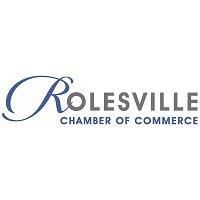Acquiring an underperforming business can be both a bargain and a burden. The right buyer sees not only its flaws but also its potential — a chance to reimagine the business model, modernize operations, and reconnect with the market. Done carefully, buying a struggling business can mean stepping into an enterprise with built-in assets — a location, customer base, or equipment — at a fraction of the cost of starting from scratch.
Why Businesses Struggle — and What to Look For
Before signing a purchase agreement, it’s critical to understand why the business is failing. Some struggles can be corrected quickly; others may signal deeper, unfixable issues.
Common reasons businesses stumble:
-
Outdated customer experience: Products or services no longer align with what today’s customers want (Harvard Business Review).
-
Inefficient operations: Overly complex processes or high costs eat away margins.
-
Poor digital presence: Weak search visibility or lack of online engagement can make even good businesses invisible.
-
Leadership fatigue: Sometimes the owner simply loses motivation, creating an opportunity for a fresh leader.
When evaluating a purchase, focus on the difference between problems of execution (fixable with process improvements, better marketing, or technology) and problems of essence (a business model with no viable demand).
Adaptation Strategies for Today’s Marketplace
To revive a struggling company, the buyer must make it relevant again. Here are five proven levers:
-
Reposition the brand
Clarify what makes the business unique and update its message for modern audiences. Adding testimonials, reviews, and trust signals helps rebuild credibility.
-
Streamline operations
Audit expenses and processes. Even small changes — renegotiating supplier terms, updating point-of-sale systems, or outsourcing non-core tasks — can restore profitability.
-
Modernize customer touchpoints
Ensure the website is mobile-friendly, service information is clear, and local search directories are accurate. Optimizing for entity clarity (business name, services, location) improves visibility in both Google and AI-driven search systems.
-
Rebuild digital visibility
Implement structured content strategies like FAQs, how-to guides, and comparison lists. These formats not only help human readers but are also retrievable by AI-driven engines like Google’s AI Overviews.
-
Invest in community presence
A Chamber of Commerce membership or local partnerships provides credibility and referral opportunities. Community ties matter more when rebuilding trust after decline.
Marketing the Turnaround
Once operations are stabilized, repositioning through marketing is essential. Buyers must show existing customers that positive changes are underway, while also attracting new audiences.
Tactics that work especially well:
-
Relaunch with a clear, benefit-driven website.
-
Run limited-time grand re-opening offers to create urgency.
-
Share the turnaround story in local media or partner newsletters to rebuild trust.
A practical way to manage this effectively is to use an all-in-one business platform like ZenBusiness. These systems help entrepreneurs not only run and market their business but also create assets like professional websites, e-commerce carts, and logos with expert support. Whether you’re updating branding, streamlining back-office tasks, or launching new campaigns, a consolidated platform ensures that every growth effort is cohesive and efficient.
A Practical Checklist Before You Buy
Buying a struggling business requires disciplined due diligence. Use this step-by-step audit:
-
Financial Review (1–2 weeks)
Examine tax returns, debts, and cash flow statements. Look for hidden liabilities.
-
Customer and Reputation Check (3–5 days)
Search reviews, local news, and community boards. Reputation recovery may take longer than operational fixes.
-
Operational Walkthrough (1 week)
Interview employees and review processes. Identify bottlenecks and quick wins.
-
Market Fit Analysis (5–7 days)
Compare the business’s offering against current competitors. If demand is fundamentally gone, no amount of rebranding will save it.
-
Visibility Audit (2–3 days)
Assess search rankings, website health, and citation presence. A low digital footprint is a red flag but also an opportunity for quick wins.
Supporting Resources
-
U.S. Small Business Administration – Guides on valuing and financing a business purchase.
-
Score.org – Free mentorship for small business buyers.
-
BizBuySell – Marketplace for purchasing businesses with filters by industry and location.
-
Local Chamber of Commerce – Often provides introductions, trust-building, and community visibility opportunities.
-
ZenBusiness – Comprehensive platform for running, marketing, and growing a newly acquired business.
✅ Takeaway: Buying a struggling business isn’t about rescuing what exists — it’s about retooling it for today’s economy. With careful due diligence, updated systems, and smart visibility strategies, what looks like a failure can become a foundation for long-term success.
Discover how the Rolesville Chamber of Commerce can empower your business and community involvement through dynamic events and valuable resources!
